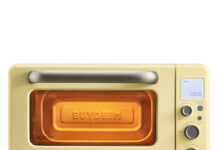Many people think that lab grown diamonds are not as valuable as mined diamonds, which is only partially true. Mined diamonds are of higher monetary value because of their hefty price tag. But when it comes to value in terms of clarity and carat, lab grown diamonds are way better. However, there are no physical and chemical differences between the two.
In recent years, the lab grown diamond industry is finally gaining the attention it deserves. In fact, the market for lab grown diamonds has seen significant growth. And it’s not hard to see why – with all the benefits they offer over traditional, mined diamonds. If you are interested in finding out more about lab-created diamonds and the industry, then keep on reading.
What Are Lab Grown Diamonds
Lab grown diamonds are diamonds created in a laboratory rather than mined from the ground. They are chemically, physically, and optically identical to natural diamonds and possess the same physical and optical properties. Lab grown diamonds are also known as synthetic diamonds, cultivated diamonds, or man-made diamonds.
Lab grown diamonds can be a great option if you’re looking for an engagement ring, a piece of fine jewelry, or a fun accessory. When you buy lab grown diamonds, you don’t have to worry about mining accidents or exploiting workers in remote parts of the world. Also, you don’t have to worry about how much carbon was released into the air.
The vast majority of lab grown diamonds are created using the high-pressure, high-temperature (HPHT) method. In this method, a small diamond seed is placed in a chamber with a metal catalyst and subjected to high pressure and high temperature. The resulting diamond is then cut and polished to create a finished gemstone.
Chemical vapor deposition (CVD) is another method of creating lab grown diamonds. In this method, a diamond seed is placed in a chamber and subjected to a plasma of carbon-containing gas. The gas breaks down and deposits carbon onto the diamond seed, resulting in a diamond.
Lab Grown Diamonds Beauty
Lab Grown Diamonds are Conflict-Free
Lab grown diamonds are a great option for those who want to avoid conflict diamonds. They don’t involve the exploitation of workers or the terrible conditions often accompanying diamond mining. In addition, because these lab-made gems can be produced in any color or quality, they don’t require the same resources to make that mined diamonds do.
They also have a smaller carbon footprint than mined stones. At the same time, gemstones can be recycled repeatedly before being discarded into landfills. They can eventually break down into their base materials. This isn’t possible with mined diamonds because their value is purely monetary—there’s no way of selling recycled jewelry.
Creating lab grown diamonds uses only renewable energy sources such as hydroelectric and solar energy. So you can feel good about wearing them, knowing they’re environmentally friendly.
Lab Grown Diamonds Grow in Months
A lab grown diamond crystal only takes about three months to grow. It is significantly faster than the millions of years it takes natural diamonds to form in the Earth’s mantle. This is because the growth process is similar to that of a human embryo, where there are several stages where things can change. First comes the seed, the stem cell; then comes all sorts of fun growth (like eyes and ears) until you’re ready for adoption.
Lab Grown Diamonds Offer Greater Flexibility in the Design Process
Lab grown diamonds offer several advantages over mined diamonds in the design process. First, because they are created in a controlled environment, lab grown diamonds can be made with specific characteristics in mind. This means that designers can choose their diamonds’ size, shape, color, and even clarity, giving them much greater control over the final product.
Lab grown diamonds are available in an endless array of shapes and cuts, including round, princess, radiant, oval, and many more. The unique properties of each form mean that they offer different levels of brilliance and fire—and, therefore, different levels of value.
For example, a round diamond is an excellent choice if you want maximum sparkle or want it to look bigger than its carat weight suggests. Whereas a marquise cut diamond offers great value for money because there is less waste when cutting it from the rough material.
Second, lab grown diamonds are often less expensive than mined diamonds, giving designers a wider budget to work with. This can be a significant advantage when creating high-end jewelry designs as it allows for more intricate and detailed pieces.
Natural Vs. Lab Grown Diamond: What are the Differences?
There are a few ways to tell the difference between a lab grown diamond and a natural diamond. One way is to look at the diamond under a microscope. Lab grown diamonds will have a more uniform structure than raw diamonds, which often have imperfections.
Another way to tell the difference is to look at the color of the diamond. Lab grown diamonds tend to be slightly less colorless than natural diamonds. They may also have a slight greenish or yellowish tint.
Of course, you can also tell the difference by looking at the price and certification. Lab grown diamonds are typically cheaper than natural diamonds of the same size and quality. These factors have helped them become popular for industrial uses. There’s no reason they can’t be used for something beautiful too.
Conclusion
As the world moves towards more sustainable practices, lab grown diamonds are becoming more and more popular. And how can they not? Even though these diamonds are created in laboratories, there is no physical and chemical difference between the two.
Lab grown diamonds are not only more sustainable, but they are also often more affordable than natural diamonds. It is because the production process is more controlled and efficient. As a result, lab grown diamonds are a great option for those looking for a beautiful, high-quality diamond without a hefty price tag.
Furthermore, lab grown diamonds are better for the environment than natural diamonds. The process of mining natural diamonds can be very damaging to the environment, but lab grown diamonds are created with no negative impact.
As more and more people become aware of the benefits of lab grown diamonds, they will likely become the preferred choice in the coming years. If you’re considering a diamond purchase in 2022, consider a lab grown diamond!
Read more interesting articles at inserior





































